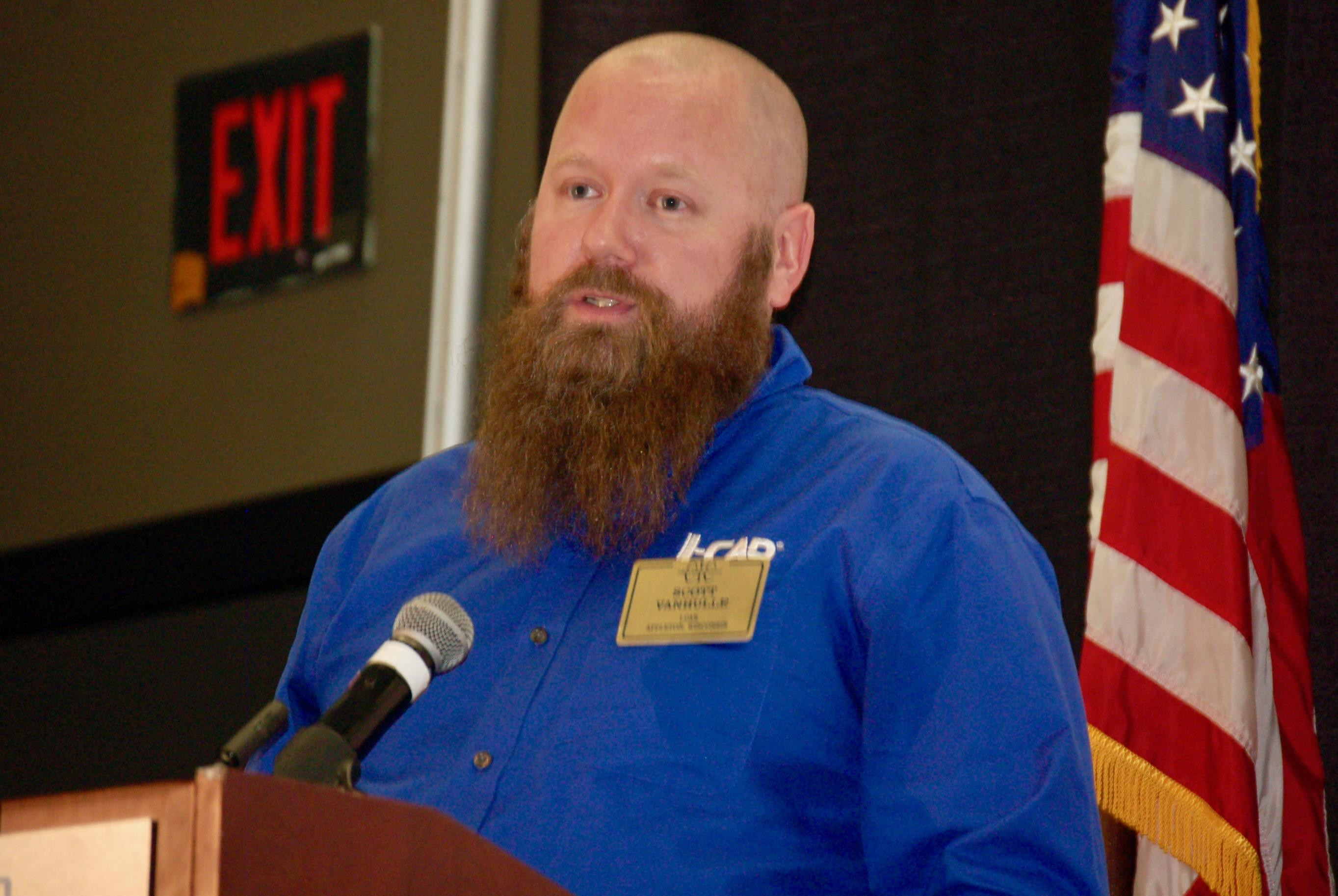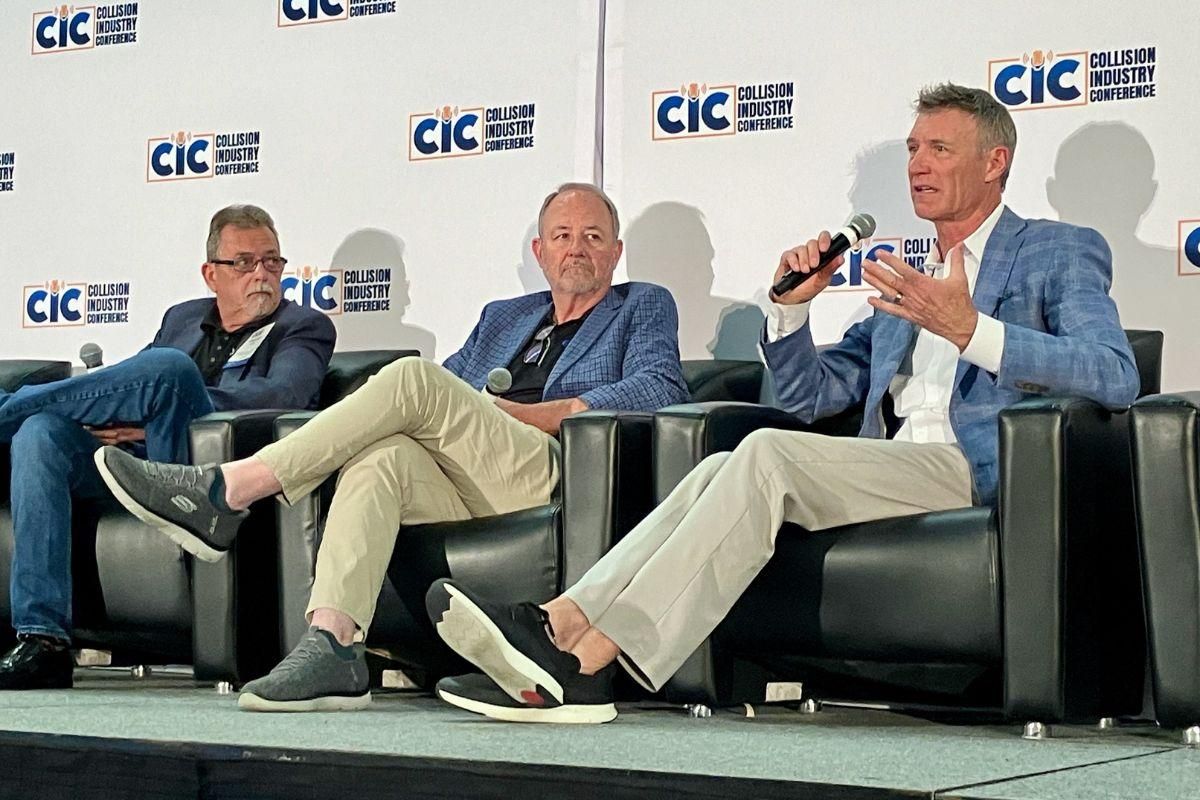With State Farm among the insurers mandating use by its direct repair shops of one of the third-party tools designed to identify the ADAS calibrations that may be necessary on a damaged vehicle, the level of accuracy of such tools was the subject of a panel discussion at the recent Collision Industry Conference (CIC).
The panelists — which included companies selling or using such tools — all shared one common message: the tools shouldn’t be considered as more than a starting point.
“A lot of people out in the industry, across all segments, are looking for an ‘easy button’ when it comes to calibration, because everyone wants to get the information and move on, check the box like we did it, we’re done,” I-CAR’s Scott VanHulle, co-chairman of the CIC Emerging Technologies Committee, said in moderating the panel discussion at the meeting in Richmond, VA.
“And what we started to find was that a lot of people were relying on the ‘easy button’ to the point where, ‘Well, if it’s not there in my ‘easy button’ from this provider or that provider, that means I don't have to do it.’ And that’s absolutely not true,” VanHulle said. “There’s so much [other] information that has to be gone through. We have to do our due diligence and look at the OEM repair information to find out for sure whether or not something needs to be done.”
Chris Chesney, a vice president with Repairify, whose company produces the adasThink calibration identification tool, concurred.
 Scott VanHulle.
Scott VanHulle.
“I think what the identification tools do is give you a starting point and a checklist and some confidence about what you’re looking for,” Chesney said. “You can probably get through that checklist a lot faster with that report than you can just starting from scratch. But you need to go back and validate it against OEM service information. You need to see it on the vehicle. You need to look at your scan report to make sure that the module is actually reporting, that it’s even alive. And if it’s there and it’s not reporting, that needs to be part of the estimate as well. But [adasThink] gives you a little bit of a head start so you can be more efficient when you start this process.”
Panelist Chuck Olson of AirPro Diagnostics pointed to the Calibration Process Workflow document finalized by a CIC committee in 2020 that highlighted the need for such steps as visual verification of the vehicle as part of the process of identifying potential calibrations needed.
 Chris Chesney.
Chris Chesney.
“So even if you’re using these [ADAS calibration identification] products, this was the guide to identify what systems are on a vehicle from the service information, checking the VIN and doing the visual identification of the car,” Olsen said. “So even if you are using these systems, I strongly recommend and implore everybody to still do the visual inspection even when you get these reports back.”
Panelist Greg Peeters of Car ADAS Solutions noted there are at least a half-dozen calibration identification systems, with “more popping up,” and said his company’s network of more than 75 ADAS calibration centers has sent in “countless” inquiries about apparent missing or incorrect information in such systems.
“Because of the feedback, they’re getting better, they’re getting smarter,” he said of the systems. “They’re just not the end-all.”
Chesney said his company works to act promptly on such inquiries.
“The adasThink team researches the issue immediately, same day, if not the same hour, because we understand you [need] that answer quickly so you can get the estimate updated or the calibration performed,” Chesney said. “If [our system] needs a correction, we correct it, and not at the end of the day, but right then. If we wait until the end of the day, you’d have to wait until the end of the day to get your answer. So we want to make sure that the customer gets their answer quickly.”
He said the user will be notified if the information Repairify is seeing doesn’t match what the user is reporting. “We may ask for photographs, we may ask for vehicle production date information, things of that nature,” he said.
“One of the things that we have been seeing over the last couple of years is that for some vehicles that were built during COVID or just post-COVID, when the supply chain fell apart, there were no modules to put on the cars. And that module may not have [eventually] made it into the vehicle, so it may not show up,” Chesney said. “Does the [vehicle] build data match that? Which set of build data are you looking at? There’s more than one build data set for an OEM. So all of these kind of play into [it]. You’ve got to refer to your [OEM] service information, you’ve got to refer to the build data that we have.”
Chesney said based on the millions of estimates Repairify has scrubbed, the company has “a pretty high level of certainty whether or not [a particular] car should have that particular sensor or not.” But he noted at least one manufacturer that didn’t have a correct sensor during production installed one that literally said “dummy” on it.
“That was a very big surprise because that led to some interesting challenges with that one,” Chesney said.
I-CAR last fall posted about the “dummy” blind spot sensor installed in some Honda vehicles, noting that when ordering parts, it is important to note the vehicle has such a sensor because VIN decoding in the parts catalog may not filter out the two different part types.
During the question-and-answer session that followed the panel discussion, CIC attendee James Rodis raised the issue of liability related to the use of third-party calibration identification tools.
“We have insurance companies that are saying, ‘Hey, you need to use this scrubbing system and that’s what we’re going to rely on or pay off of,’” said Rodis, of OEM Calibration and Woodhouse Collision Centers. “Who’s got the liability if [the calibration identification tool] is not pulling things that do need calibrations?”
“I would say the shop still has the liability on those things,” Olson said. “So you have a huge liability exposure if there’s something in the [OEM] service information that needs to be done after a certain procedure and you don’t do it. Regardless of what an insurer says. Forgoing [checking the OEM information] is a huge mistake, in my book.”
“And I would definitely check the disclaimer on the bottom of that [third-party] report,” Peeters suggested.
Panel moderator VanHulle concurred.
“I think if you hear anybody saying out in the industry that if a calibration is not on one of these software provider tools, you don’t have to do it, you need to stop them dead in their tracks and correct them,” VanHulle said. “Just because it’s not on there, that doesn’t mean that vehicle doesn’t have any calibrations that are required.
“It’s something I’ve heard I don’t know how many times, from all segments of this industry. And it’s just the furthest thing from the truth,” VanHulle added. “And we need everybody in this room to beat that drum and stop that from being said, because that is the most untrue statement I’ve ever heard.”














John Yoswick